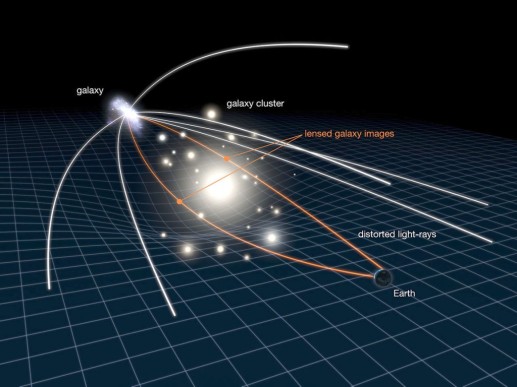 A couple of months ago I talked about a piece of evidence supporting the existence of Dark Matter which is the fact that the stars in the outskirts of galaxies were seen to move at a similar pace as galaxies near the galactic core, defying the norm of the Keplerian Decline.
A couple of months ago I talked about a piece of evidence supporting the existence of Dark Matter which is the fact that the stars in the outskirts of galaxies were seen to move at a similar pace as galaxies near the galactic core, defying the norm of the Keplerian Decline.
Recap: Dark Matter makes up roughly 25% of the Universe, so it is five times more prevalent than ordinary Baryonic Matter. Physicists gave it the name Dark Matter not because of it having some mysterious evil property or anything of that sort, but because it simply does not interact with Electromagnetic Radiation. I agree Physicists are a creative bunch.
Well, if Dark Matter is so prevalent, then why haven’t we detected it yet? I’m sure it does not only frustrate me, but also the majority of Astronomers, Astrophysicists, Cosmologists.. you name it, that there are Dark Matter particles streaming through this room, in front of your computer or mobile screen and is virtually everywhere you point your eye to right now, but we have no way of knowing that it’s here. Again, how do we know of its existence in the first place? Apart from identifying it through Galactic Rotation Curves as said in the last post, Dark Matter is also proven to exist through a crazy phenomenon called Gravitational Lensing.


Einstein’s General Relativity states that a massive object such as Earth leaves a dent in the fabric of Spacetime, distorting it, causing close enough objects to orbit it, spiral in, etc. The more massive an object is, the bigger its dent in space-time, the stronger its gravitational pull towards something. Not only does a massive object alter the path of smaller objects but also has an effect on the path light takes when passing it. Returning to the Quasar, the light from the Quasar is actually bent around the large galaxy through the effects of Gravity to reach Earth. It’s almost as if there’s an enormous lens in the middle. Being the creative bunch physicists are, we call this phenomenon Gravitational Lensing.

By studying such images of distant astronomical objects, one can measure the extent of distortion of the distant objects by the gravity of the clusters of galaxies in front of them (majority of which is a Dark Matter Gravitational field), we are then able to calculate the total mass of the cluster of galaxies causing the distortion and compare the data to the amount of visible matter. When recreating a map of the distribution of matter, it is found that most of the matter in the cluster of galaxies are not Baryonic but are in fact giant clouds of Dark Matter.
Author – Susan Chen
Susan is a 5th year high school student currently studying three STEM subjects at Scottish Higher level-Mathematics, Physics and Chemistry (Crash Course). She particularly loves ideas in cosmology and hopes to embark on an academic journey in the area of theoretical physics.

Dark matter articles always make me think for the next few hours!! Nice post ..
LikeLiked by 1 person
🙂
LikeLiked by 1 person
Really very interesting!!! Thanks for your thoughts!!!! 🙂
LikeLiked by 1 person
Thanks!
LikeLike